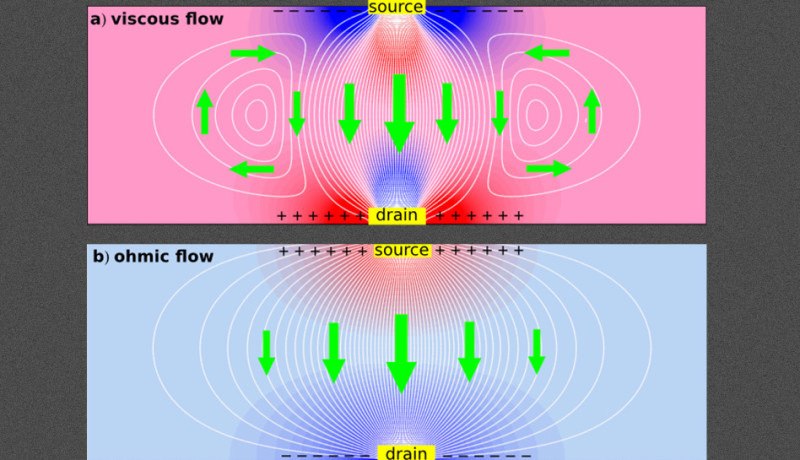Electrons swirl as a fluid and create a negative resistance
February 26, 2016
on
on

Normally speaking, current flows in only one direction, but professor Leonid Levitov from MIT in Cambridge USA and professor Gregory Falkovich of the Weizmann Institute of Science in Israel have been able to prove that electrons can, in some circumstances, behave as a fluid and can form vortexes, where the current moves 'against the current' in some places, which actually means that the material has a negative resistance at that location.
This phenomenon of viscosity of an electrical current has long been suggested in theory, but because of the absence of a suitable method had up to now not been observed in practice. In contrast to a fluid, it is impossible to add visible particles or a dye to make the current visible. Recent experiments have shown that in a strip of graphene the voltage at the edges of the strip is lower or sometimes even negative compared to the middle, where the 'great current' of electrons are flowing.
More information: MIT.
This phenomenon of viscosity of an electrical current has long been suggested in theory, but because of the absence of a suitable method had up to now not been observed in practice. In contrast to a fluid, it is impossible to add visible particles or a dye to make the current visible. Recent experiments have shown that in a strip of graphene the voltage at the edges of the strip is lower or sometimes even negative compared to the middle, where the 'great current' of electrons are flowing.
More information: MIT.
Read full article
Hide full article


Discussion (0 comments)